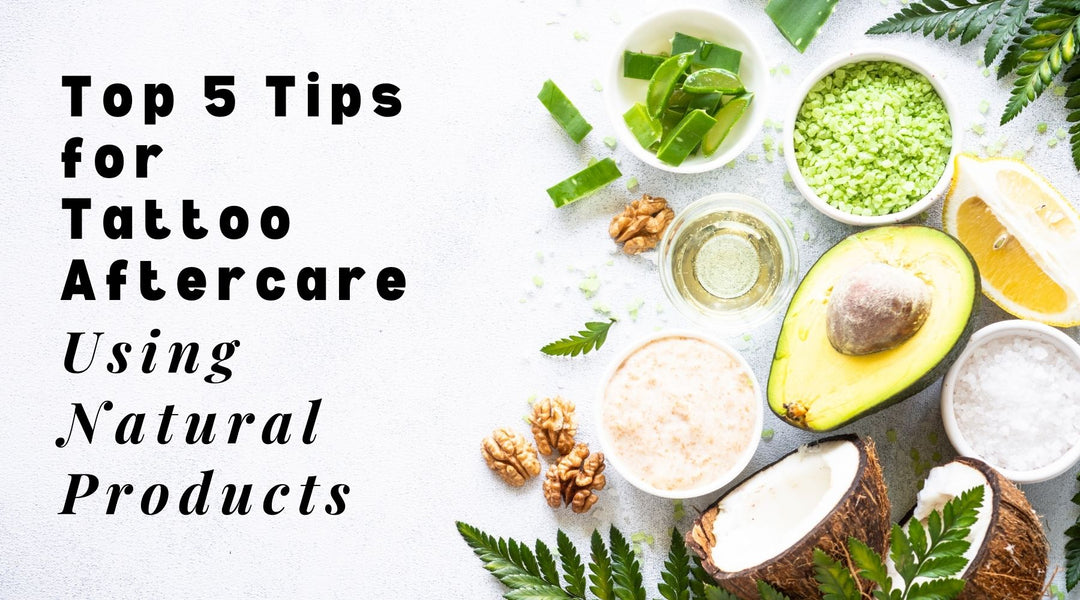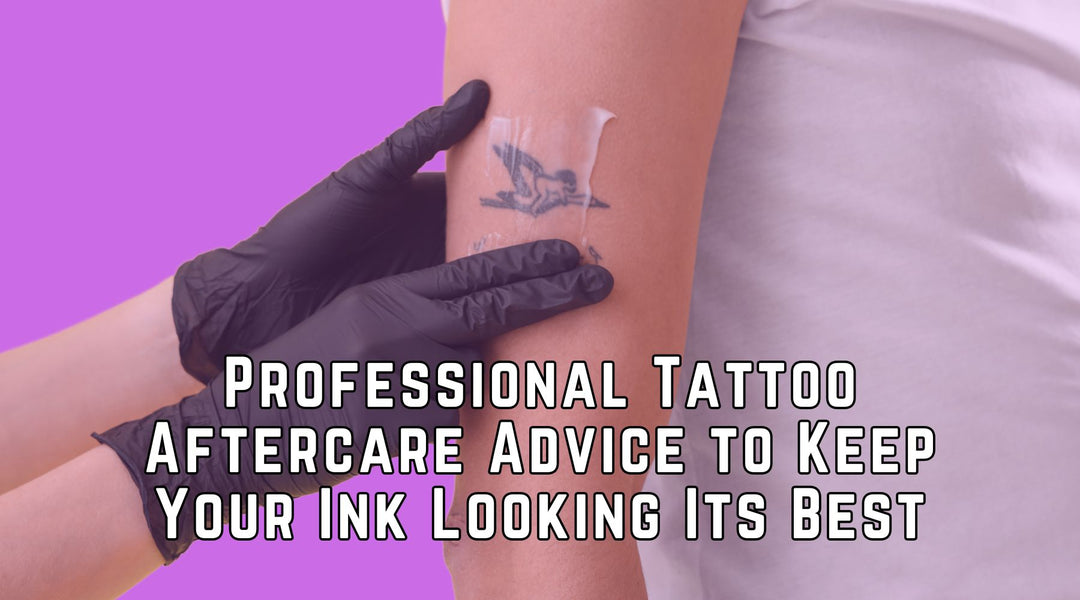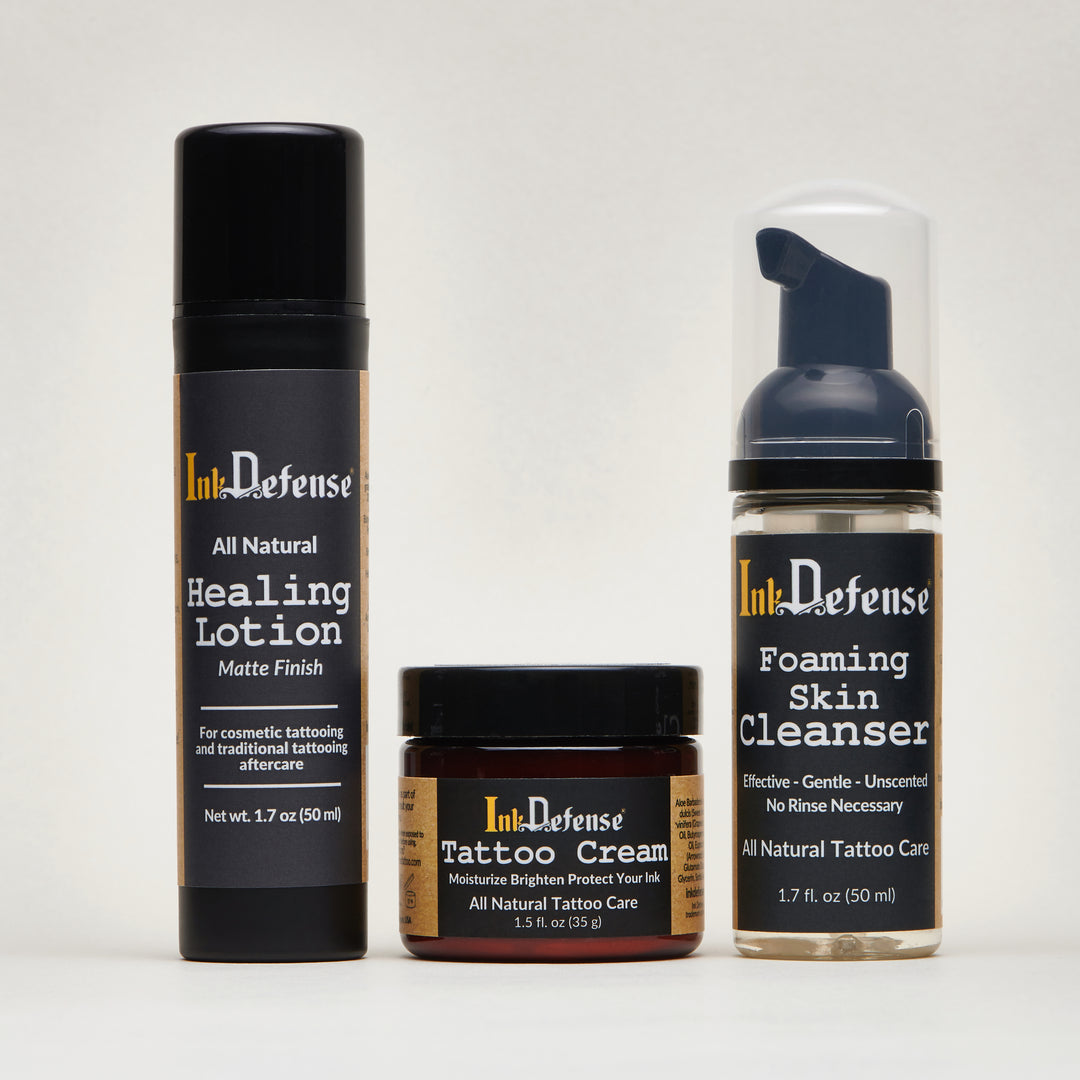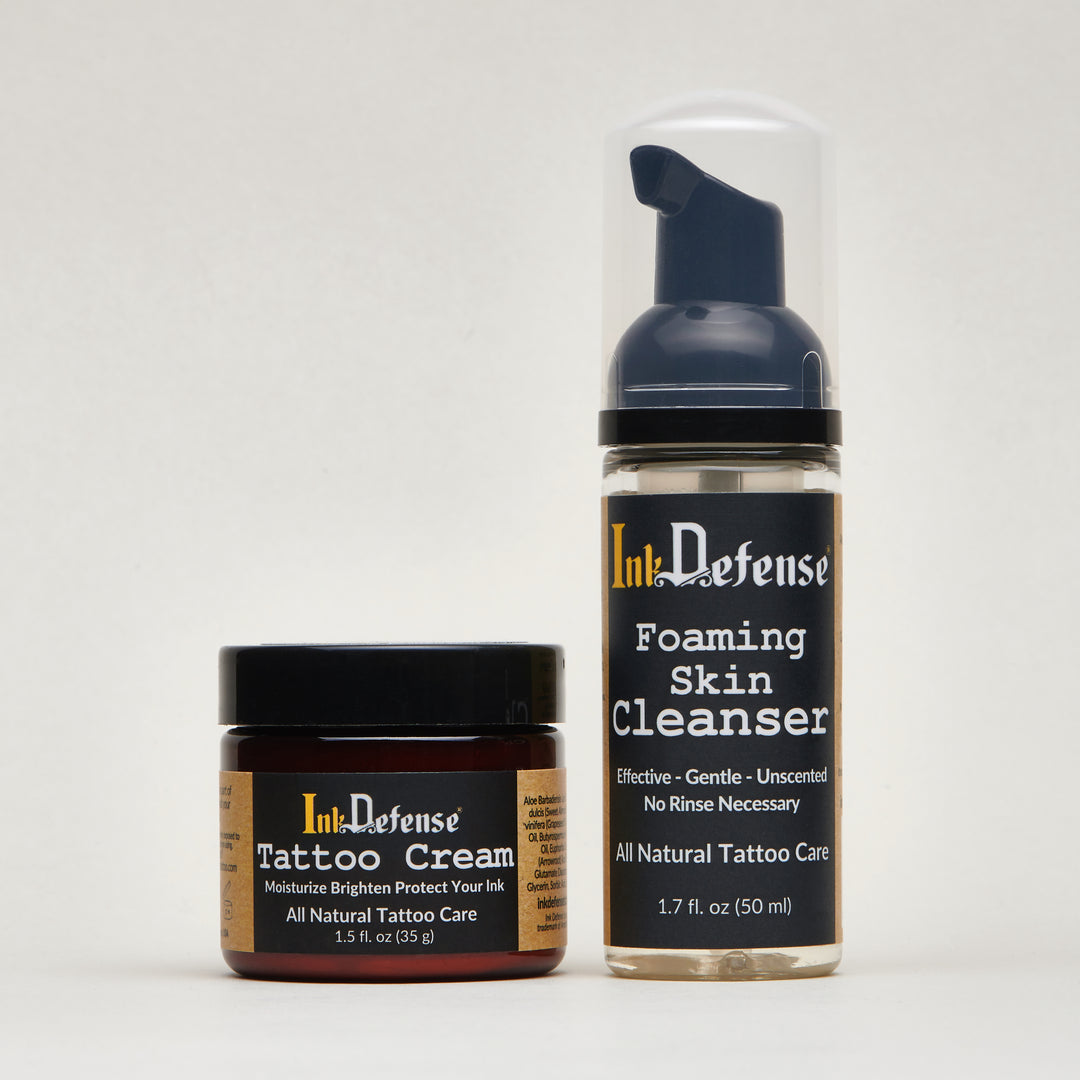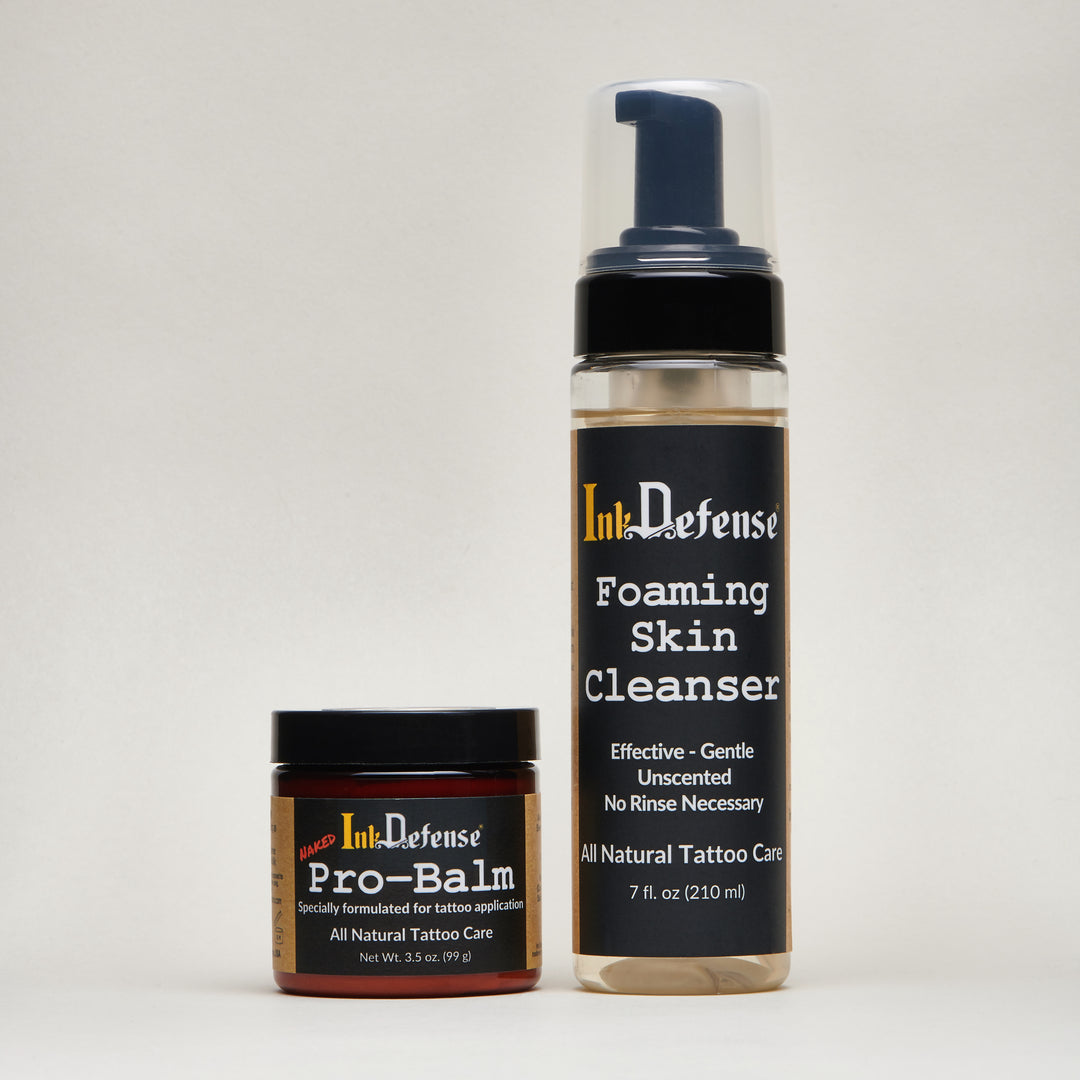The value of natural sun protection for tattoos
Have you heard about the sunscreen recalls? Some sunscreen products are noted as potentially having benzene in them. Benzene is known as a cancer-causing agent for humans. Benzene is found in crude oil and is a major part of gasoline; all part of the petroleum refinement process. Benzene is an industrial chemical that is used to make plastics, resins, synthetic fibers, rubber lubricants, dyes, detergents, drugs and pesticides.
I can give up the aerosol sunscreen but I still want a high SPF. Is there a risk?
If you want a high SPF (sun protection factor), you are most likely using chemical sunscreen. Chemical sunscreens contain EDCs (endocrine disruptor chemicals) and cause even greater health risks.
Developed in the late 1970s, the most common sun protection was chemical sunscreen which uses ingredients like avobenzone, octocrylene, and the most popular, oxybenzone (sometimes called benzophenone-3). These chemicals are absorbed into the skin and in turn absorb harmful UV rays, which they convert into heat. While these sunscreen ingredients have been widespread for decades, research suggests that common UV filters, including oxybenzone, found in chemical sunscreens may disrupt hormones like estrogen and serotonin. This hormonal disruption can lead to reproductive challenges, allergies, the development of certain diseases, and more health problems
Emerging research suggests that common ingredients in chemical sunscreen (avobenzone, oxybenzone, and octocrylene) show up in the bloodstream within hours of a single application, and not just in trace amounts, but in as much as 400 times what is considered safe.

Do You Need to Wear Sunscreen? Duh, YES!
The facts don’t lie. One in five Americans will develop skin cancer by the age of 70, and having just five or more sunburns doubles your risk of melanoma, according to the Skin Cancer Foundation.
Harmful sun exposure is a problem for all people. People with all skin tones need to wear (and reapply) sunscreen regularly. The danger is even greater given that BIPOC patients are often diagnosed with skin cancer in later stages of the disease, according to the American Academy of Dermatology.
Additionally, unprotected sun exposure causes wrinkles, premature aging, and hyperpigmentation, and can lead to sun damaged skin and UV damage on a cellular level.
Mineral-based sunscreens can protect your skin and your health...and the environment too!
There's an easy alternative to chemical sunscreen; using a mineral based (also known as “physical”) sunscreen not only provides skin protection it is also safer for your skin and general health. Physical sunscreens work by sitting on top of your skin and blocking UV rays at the surface.
Mineral based sunscreen may take a little more effort to apply evenly and blend than chemical sunscreen. It should also be reapplied at least every 80 minutes and immediately after swimming if the formula is not water-resistant. But the time and effort are well worth the peace of mind knowing that your sunscreen is not allowing unwanted chemicals to swim around in your bloodstream.
Switching to mineral sunscreen can also save the planet. The Hawai'i senate passed a bill that banned the sale of oxybenzone and octinoxate sunscreens after research found that the chemicals were causing bleaching, DNA damage, and death in coral. Many other countries and locales are enacting similar laws including Key West Florida, US Virgin Islands, Aruba, and Mexico.
Take care of yourself and our plant, use mineral based sunscreen protection.
Sources:
Sunburns increase risk of skin cancer | Skin Cancer Foundation


